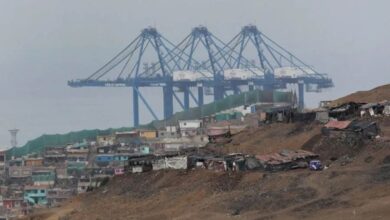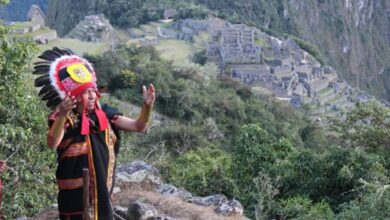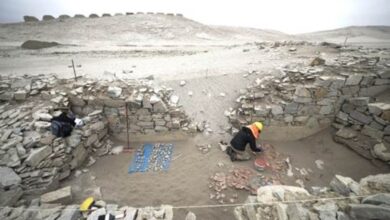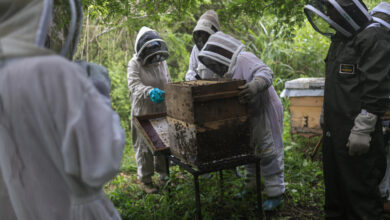Lima Turns Purple: The Procession of the Lord of Miracles Returns to the Heart of Peru
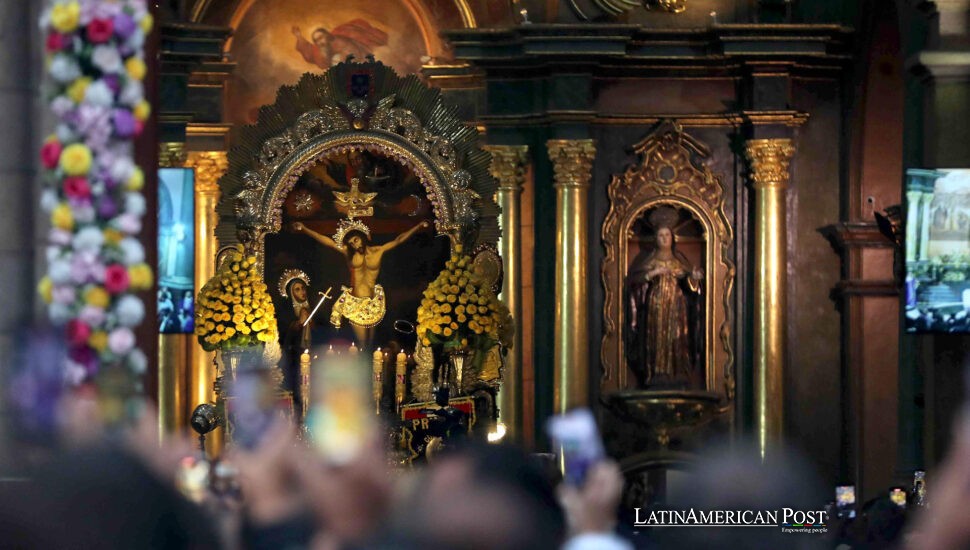
Before dawn, Lima’s old center shimmered in purple and white, reborn in the glow of devotion. Balconies draped in banners, confetti drifting like ash over a sea of faces, the air thick with incense and trumpet echoes—it could only mean one thing. El Señor de los Milagros, the Lord of Miracles, had emerged once more from the Church of Las Nazarenas, carried on his gilded and swaying above the crowd like a moving altar. Each October, this ritual transforms the capital into a cathedral of streets, uniting rich and poor, locals and migrants, the faithful and the merely curious in a single, slow-moving heartbeat.
A City Remade in Purple and White
By first light, Lima’s colonial streets had become a river of faith. White and purple ribbons hung between balconies. Arches of balloons bridged narrow lanes. Fireworks and paper stars showered down as the crowd pressed forward to glimpse the image that had survived centuries of chaos.
The origin of this devotion is woven with catastrophe and endurance. On October 28, 1746, Lima—then capital of Spain’s most prosperous colony—was shattered by an 8.5-magnitude earthquake and a tsunami that erased the port of Callao. Only one wall stood unbroken: the wall of a humble Pachacamilla chapel bearing the painted Christ that locals soon came to call miraculous. From that wall, and from the rubble that surrounded it, rose a faith that now moves millions.
Each October, twenty cuadrillas—teams of bearers from the Brotherhood of the Lord of Miracles—shoulder the anda through Lima’s avenues. They wear purple scapulars over black suits, white shirts, and royal-violet ties. Beneath their steps, streets bloom with sawdust carpets and rose petals. Police lines strain to contain the multitudes, vendors weave through the throng hawking stools and sweets, and every block invents its own way of greeting the divine: a brass band on Tacna Avenue, a chorus outside San Bartolomé Hospital, a wave of candles reflected in a thousand phone screens.
Women at the Front of the Procession
At the head of this moving fortress of silver and wood are women whose devotion shapes its rhythm. The cantoras lead the hymns; the sahumadoras trail incense that curls like memory. Their chants blend with the percussion of footsteps, forming the pulse that carries the Christ through the city.
“My name is Rosa Palermo. I belong to the Hermandad de las Nazarenas of New York,” she told EFE, her white mantilla fluttering in the morning breeze. “There in Patterson, it’s done just like here,” she said proudly, describing how Peruvian migrants have recreated the same choreography of song and smoke across American cities, and for her, this year marked a homecoming—one shared by dozens of women who traveled from the United States to join the Lima procession.
“Faith is spilling across the whole world,” added Rosa Herrera, who has carried the devotion for 53 years and now lives in Washington, D.C. There, the Cristo Moreno walks the streets each October, borne by squads of both men and women. “There are others in Virginia, Maryland, Patterson, Connecticut, Atlantic City,” she told EFE. “It’s a blessing; he’s the only one who can solve things we cannot.”
Suppose Lima claims the Lord of Miracles as patron. In that case, the diaspora claims him as migrant—a traveling Christ, carried in replicas and prayers from Newark to Queens, from Lima’s alleys to suburban parish halls scented with copal.
When the City Stops, Hospitals Open Their Doors
By midmorning, the procession paused before the gates of Arzobispo Loayza Hospital, keeping a ritual that merges faith with care. Each year, Christ enters the courtyard to visit those who cannot join the crowds. “Lima stops when he passes,” said Dr. Yinno Custodio, an oncologist at Loayza, as hymns echoed down the corridors. “We decorate the wards with balloons, images… It’s very emotional,” he told EFE. “For us, it’s not only tradition—it’s healing.”
Inside, nurses tuck purple ribbons into their hair. A patient lifts a print of Christ from a bedside table. A doctor, still in scrubs, leans against a window to catch a glimpse of the golden platform edging through the courtyard. For a few moments, the boundary between faith and medicine dissolves. The hospital becomes another street in the procession, and the city’s devotion feels not like a spectacle but like service—a promise that no one is outside the miracle.
This October 28 march was the penultimate journey of the year; the final procession on November 1 will return the image to Las Nazarenas, where it rests behind wrought iron until next October, when the crowd returns. The rhythm has endured for generations: grandparents pointing out corners, children learning the melody of faith through color, smoke, and the creak of wooden poles.
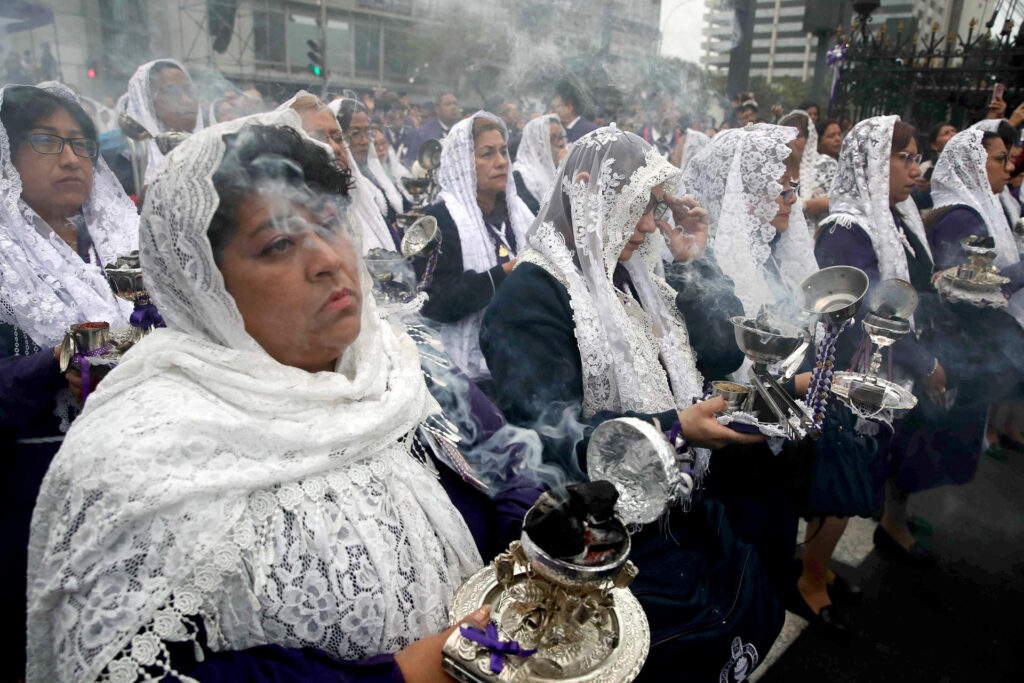
Devotion Multiplied in Miniature
Faith in Lima does not end with the grand procession—it multiplies in small miracles. As the crowd waited for the Cristo de Pachacamilla to arrive, a miniature image—no taller than a child’s arm—surfaced above the sea of heads, lifted by a woman’s hands. “I made it during the pandemic,” said Nora, eyes shining as she steadied the tiny Anda against the tide of people. “There was nowhere to greet him, so I started knocking on doors so everyone could see him,” she told EFE.
That improvisation has become tradition. Each year, Nora’s neighbors expect her homegrown procession—a few blocks of hymns and handbells, a portable miracle born of isolation. “He is the love and devotion of my family,” she said softly, “and the peace and tranquility of the Peruvian people. He is my life.“
As dusk descended, the confetti melted into puddles, the petal carpets blurred underfoot, and the last chords faded into the hum of traffic returning. A boy dragged his folding stool home, proud of the view he’d earned. Vendors packed away their incense.
To outsiders, Señor de los Milagros might look like folklore or civic theater. But in Lima, purple is not costume—it’s a public language of belonging. It ties the colonial heart of the city to hospital corridors, connects Washington and New Jersey to Jirón Cañete, and fuses a grandmother’s hymn with a teenager’s phone video.
Also Read: Argentine Chef Narda Lepes Cooks Up Resistance One Gathering at a Time
The painted Christ that survived the 1746 earthquake has outlived empires, migrations, and pandemics. His true miracle, say those who walk beside him, is that each October, he turns a city of strangers into a single procession of kin—a living river of purple and faith flowing toward the same, unshaken wall.

